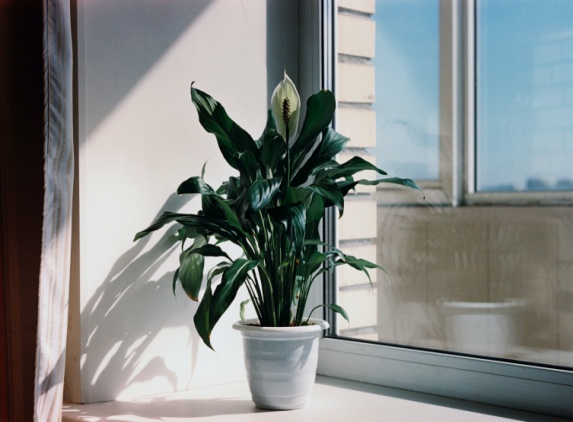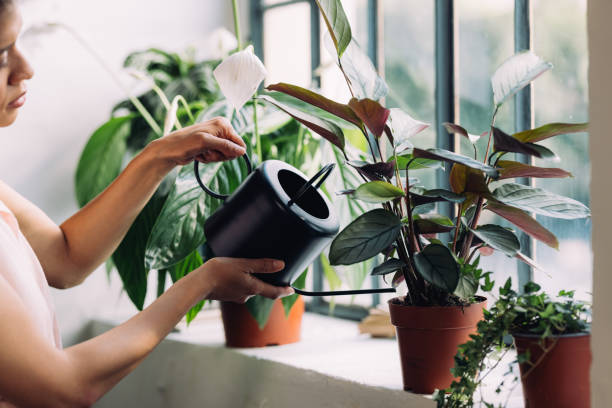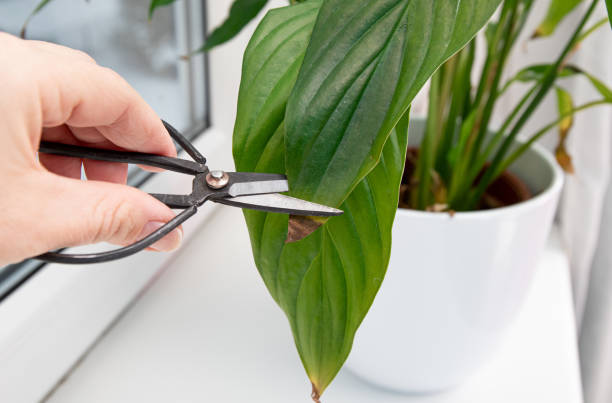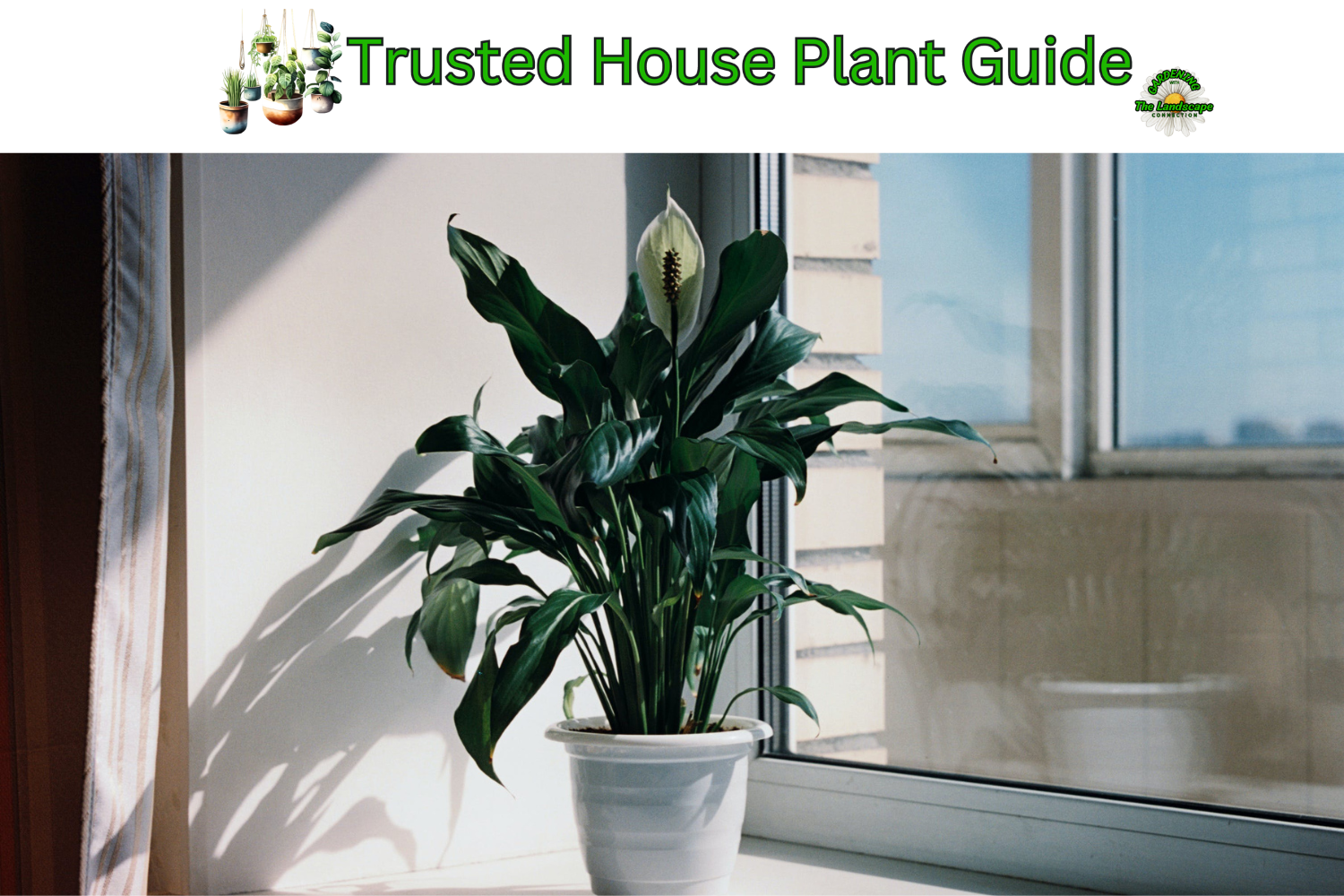THE PEACE LILY

Hey there, green thumbs and budding plant enthusiasts! Today, we’re going to dive into the world of the Peace Lily, a plant that’s not just a pretty face but a symbol of serenity and purity. Whether you’re a seasoned plant parent or just starting your green journey, this guide is your go-to resource for all things Peace Lily. So, grab a cup of your favorite beverage, and let’s explore how to keep these stunning plants thriving in your space.
Peace Lily Symbolism and Sentiment: Did you know that the Peace Lily is more than just a lush green plant with gorgeous white blooms? It’s actually steeped in meaning. This plant symbolizes peace (obviously, right?), purity, and tranquility. It’s the kind of plant that doesn’t just sit quietly in the corner of your room; it adds a certain calmness to your space. Whether it’s a thoughtful gift for a friend or a treat for yourself, the Peace Lily brings a message of hope and harmony wherever it goes. And let’s face it, who couldn’t use a bit more of that in their lives?
The right soil composition is crucial for the health and growth of Peace Lilies. These plants, part of the araceae family, generally prefer a balanced soil that retains a bit of moisture yet drains well, ensuring the soil stays evenly damp but not soggy. This balance is essential to prevent issues like root rot, which can occur in overly moist conditions.
Soil Care and Preparation:

There are a few options for achieving this ideal soil balance:
- Quick DIY Mix: In a pinch, you can mix 2 parts regular indoor potting mix or cactus mix with 1 part bark or perlite. This combination increases aeration and improves drainage while retaining some moisture. However, it may still hold onto moisture more than ideal for long-term health.
- DIY Aroid and Peace Lily Soil: A more specialized DIY mix can be made using 5 parts orchid
- bark, 4 parts coir, 5 parts perlite,
2 parts activated charcoal, and 2 parts worm castings. This mix is initially more expensive due to the cost of individual ingredients but provides a large quantity of high-quality soil suitable for aroids and other houseplants.
Ready-to-Use Potting Mix for Aroids: For convenience, pre-mixed soils formulated for aroids, like the Premium Monstera Potting Soil, are also suitable for Peace Lilies. Such mixes typically contain coco coir, orchid bark, and perlite, offering an ideal balance of drainage and moisture retention. These premixed soils also remain well-aerated, which is crucial for the roots to grow and breathe.
In summary, whether opting for a DIY mix or a ready-to-use potting mix, the key is to ensure that the soil for your Peace Lily provides adequate drainage while retaining sufficient moisture to keep the plant healthy.

Proper Watering is important to all plants
Watering is indeed a critical aspect of Peace Lily care. Here’s a guide that combines best practices and tips for optimal watering:
1. Check Soil Moisture: Instead of following a strict watering schedule, always check the soil’s moisture. Peace Lilies typically need water once a week, but this can vary. The top two inches of soil should be dry before you water again.
2. Quality of Water: Use good quality water for your Peace Lily. Tap water often contains chemicals like chlorine and fluoride, which can be harmful. Use distilled or rainwater, or let tap water sit for 24 hours before using it.
3. Watering Technique: Water the soil directly, not the leaves, to avoid fungal diseases. Water thoroughly until it drains out of the bottom of the pot. This ensures that the roots receive sufficient water and flushes out any built-up salts in the soil.
4. Drainage: Ensure the pot allows free drainage to prevent root rot. Use a pot with drainage holes and a well-draining potting mix, possibly adding perlite, sand, or gravel to improve drainage.
5. Dry Out Between Waterings: Let the soil dry out a bit between waterings. Overly moist soil can lead to root rot. Use a finger or a soil moisture meter to check if the soil has dried out sufficiently.
6. Seasonal Adjustments: Reduce watering frequency in winter to about once every two weeks or when the top two inches of soil are dry.
7. Signs of Under-Watering or Over-Watering: If the leaves start to droop or wilt, it’s a sign that the plant needs water. Conversely, yellowing leaves can indicate over-watering.
By adhering to these guidelines, you can ensure that your Peace Lily receives the right amount of water, contributing significantly to its overall health and well-being.
Fertilizing
Fertilizing Peace Lilies should be done with care, as they are low-maintenance plants that do not require frequent feeding. Here’s a guide to effective fertilization:
- Type of Fertilizer: Use a water-soluble plant fertilizer. A balanced NPK (Nitrogen, Phosphorus, Potassium) ratio of 3-1-2 is recommended. Look for fertilizers labeled 24-8-16, 9-3-6, or 12-4-8.
- Frequency: Fertilize your Peace Lily once a month during the growing season (spring and summer). During the winter, reduce this frequency to every 8 weeks.
- Application: Dilute the fertilizer to half the strength recommended on the package to avoid over-fertilization. Apply it when watering the plant to ensure even distribution and to avoid root burn.
- Post-Repotting: After repotting, wait a few weeks before fertilizing. The fresh soil often contains nutrients, and the plant needs time to adjust to its new environment.
- Signs of Over-Fertilization: If the leaves of your Peace Lily start turning brown at the tips, it might be a sign of fertilizer burn. In such cases, flush the soil with water to remove excess fertilizer.
By following these guidelines, you can ensure that your Peace Lily receives the right amount of nutrients to support its growth without the risk of over-fertilization.
 Browning Leaves
Browning Leaves
Browning in Peace Lily blooms can be concerning, but understanding the causes and solutions can help you maintain the plant’s beauty:
- Direct Sunlight: Peace Lilies prefer indirect light. Direct sunlight can burn the flowers, causing them to turn brown. Solution: Move the plant to a location with indirect sunlight, like near an east-facing window, or use blinds to filter the light.
- Lack of Care & Stress: Inconsistent temperatures, low humidity, over or underwatering, and using tap water can stress the plant. Solution: Maintain warm and consistent temperatures, ensure high humidity, follow proper watering guidelines, and use distilled or rainwater.
- Pests: Thrips can cause brown spots on the flowers. Solution: Use insecticidal soap spray to eliminate thrips.
- Bacterial Brown Spot: This disease causes brown spots with yellow halos on flowers. Solution: Isolate the plant, treat with a hydrogen peroxide solution, and remove severely affected parts.
- Collar Rot (Southern Blight): Caused by overwatering or prolonged moist soil. Solution: Use a fungicide and ensure good soil drainage.
- Root Rot: Overwatering leading to mushy roots can affect the entire plant, including flowers. Solution: Repot the plant, remove infected roots, and use a hydrogen peroxide solution.
- Ringspot Virus: Characterized by dark brown streaks on flowers, often due to aphids. Solution: The virus is not treatable, but controlling aphids with neem oil or a soap solution can help.
- Old Age: Flowers naturally turn brown as they age. Solution: Provide the best care possible to prolong the life of the flowers.
By addressing these issues with the suggested solutions, you can prevent or mitigate browning in Peace Lily flowers, ensuring the plant remains an attractive feature in your home.
So there you have it, fellow plant lovers! The Peace Lily isn’t just a plant; it’s a symbol of tranquility and a natural air purifier, making it a perfect addition to any home. Whether you’re gifting it to a friend or treating yourself, this low-maintenance beauty promises to enhance not just the aesthetics of your space but also the overall vibe. With its lush leaves and pristine white flowers, the Peace Lily stands as a testament to simplicity and purity. Embrace the joy of nurturing this splendid green companion and watch as it brings a sense of harmony and health to your happy home. Remember, every leaf and bloom is a step closer to a greener, more serene living space. Let’s keep growing together! 




Pingback: Cultivating Tranquility: A Guide to Propagating Peace Lilies – Trusted House Plant Guide